Alfa
Romeo's new Q2 self-locking front differential, which
improves all the strong points of a front-wheel drive system
in terms of active safety, increasing driving enjoyment and
control, has arrived on the market. The innovative system
provides some of the advantages typical of four-wheel drive,
but at a significantly lower cost and weight. The system is
now available exclusively with the 150 bhp JTDM engine on
the Alfa GT and Alfa 147, but will subsequently be extended
to other models in the Alfa Romeo range. It is a step
forward that reflects the current state of the art of
turbodiesel technology which, since 1997, the year that the
Alfa 156 JTD was launched (the first car to adopt Common
Rail technology), has seen a considerable increase in torque
delivery to the wheels even on compact cars. Alfa Romeo has
developed the sophisticated ‘Q2’ system to guarantee maximum
control and traction in all driving conditions.
In addition to the new transmission, the Alfa 147 ‘Q2’ is
also identified externally by a number of stylistic details:
satin finish whiskers, grille and mirror housings, special
17” alloys, a rear spoiler, chromed exhaust terminal, lower
stance and the ‘Q2’ logo at the rear. Inside, this version
has a particularly sporty outfit underlined by instruments
with red scale background and white lighting, leather
upholstery with red stitching on the steering wheel, gear
lever and hand brake gaiters, grey anthracite trims on the
steering wheel and central console, special ‘Q2’ heel-high
strips and aluminium pedals. The equipment of the Alfa 147
‘Q2’ is completed by radio controls on the steering wheel,
cruise control, the VDC system, 6 airbags and a Bose® Hi-Fi
system.
The Alfa GT ‘Q2’ version, on the other hand, has specific
18” rims, dual chromed exhaust terminals, satin finish
grille, whiskers and mirror housings, low stance and the
‘Q2’ logo on the tailgate. The styling of the interior
underlines this version’s sporty character: an instrument
panel with a red background and white lighting, black
leather seats with red stitching and the Alfa Romeo logo,
the steering wheel, gear lever and handbrake gaiters in
black leather with red stitching, special ‘Q2’ heel-high
strips, grey anthracite facia trims and aluminium pedals.
And finally, radio controls on the steering wheel, radio
with CD and MP3 player, and a Bose® Hi-Fi system with
sub-woofer are all standard.
The introduction of the ‘Q2’ versions of the Alfa 147 and
Alfa GT extends the range of the two models which are
enjoying great popularity with public and critics, not only
achieving their set goals but exceeding every expectation.
For example, in almost three years on the market, the Alfa
GT has acquired over 55,000 customers in Europe, which
underlines that the model has earned itself an important
space in a fiercely competitive market segment.
The Alfa 147 is even more successful; since 2000, more than
500,000 have been bought by European motorists. And we
cannot overlook the accolades from the trade press which, to
date, has awarded the car a total of 32 prizes,
acknowledging the car’s ability to express a new concept of
sportiness in which elegance, comfort, safety and refined
technology converge. Prizes from the critics include: the
title of ‘Car of the Year 2001’, ‘Volante d’Oro’, ‘Trophées
du design 2000’, and ‘Auto importado del Año en Brasil
2002’; while those awarded by readers include: ‘Auto Europa’
in 2001, and ‘L’auto che preferisco’ in 2001, 2003, 2004 and
2005.
The Alfa 147 and Alfa GT have kept their promise, achieving
important goals. The merit certainly goes to the sound
foundations on which the models are built: the best elements
of Italian design, sophisticated engineering and the many
engine-gearbox combinations which have been constantly
updated and added to, maintaining public interest high at
all times, as the debut of the ‘Q2’ version today
underlines.
How the Alfa ‘Q2’ system works
The main
element of the ‘Q2’ system is a limited slip
differential, of the Torsen mechanical type. This
differential splits torque between the front drive
wheels dynamically and constantly, according to driving
conditions and the road surface.
|
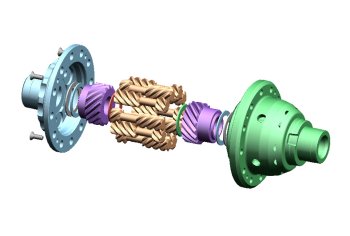 |
|
The main element of the ‘Q2’
system is a limited slip differential, of the Torsen
mechanical type. This differential splits torque
between the front drive wheels dynamically and
constantly, according to driving conditions and the
road surface. |
|
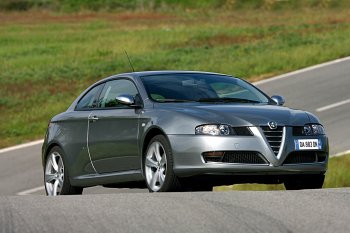
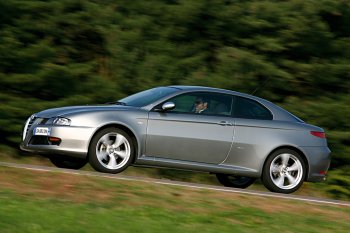
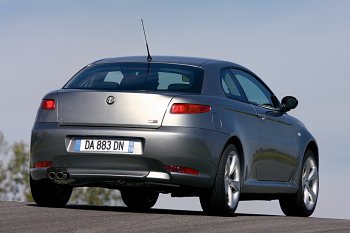 |
|
The Alfa GT ‘Q2’ version, on the other hand, has
specific 18” rims, dual chromed exhaust terminals,
satin finish grille, whiskers and mirror housings,
low stance and the ‘Q2’ logo on the tailgate. |
|
|
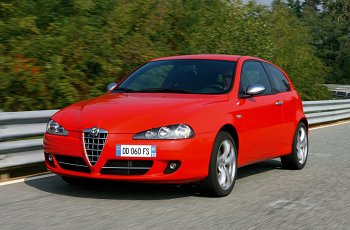
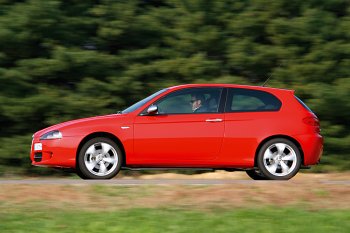
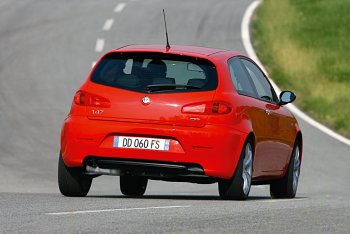 |
|
In addition to the new transmission, the Alfa 147
‘Q2’ is also identified externally by a number of
stylistic details: satin finish whiskers, grille and
mirror housings, special 17” alloys, a rear spoiler,
chromed exhaust terminal, lower stance and the ‘Q2’
logo at the rear. |
|
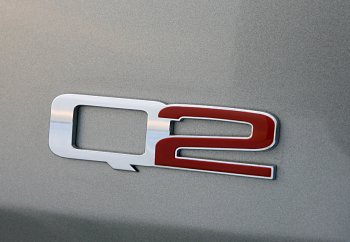 |
|
The system is now available exclusively with the 150
bhp JTDM engine on the Alfa GT and Alfa 147, but
will subsequently be extended to other models in the
Alfa Romeo range. |
|
|
Combined with
the exclusive double wishbone front suspension, the system
allows very effective fine tuning of the car. Alfa Romeo
started from the excellent reputation that front-wheel drive
enjoys with customers (in fact it is the layout chosen by
the majority of car-makers). Suffice it to say that, in
addition to the overall benefits of this type of
architecture (weight, roominess, etc.), in extreme
conditions, the understeer typical of front-wheel drive
enables the driver to respond more intuitively to the car’s
reactions: this gives the impression that front-wheel drive
is more ‘responsive’ than rear-wheel drive. To highlight
these benefits, Alfa Romeo has developed the ‘Q2’ system
which embodies all the strengths of front-wheel drive,
significantly increasing roadholding, traction and stability
on the release, while attenuating understeer on
acceleration, the intervention of the electronic control
systems and steering wheel vibration.
The two practical examples below highlight the technical
potential of the ‘Q2’ system.
Case no. 1: when the car corners
Taking a corner when grip is poor (wet road, snow, mud,
etc.) or with a sporty driving style, grip is often lost on
the inside wheel. When the transfer of the lateral load
takes weight off the suspension, torque on the inside wheel
is reduced, and a conventional differential (which splits
the same torque value between both wheels) transfers an
equal amount of torque to the outside wheel, but this is
insufficient for good traction.
In this situation the car can respond in two different ways,
depending on the equipment mounted. On a model without ASR-VDC,
the perceived result is the slipping of the inside wheel, a
loss of control of the car (strong understeer) and a loss of
acceleration coming out of the bend. If, on the other hand,
the car is equipped with ASR-VDC, the intervention of the
driving assistance systems takes power from the engine,
acting on the throttle valve and the braking system, so that
it becomes impossible to modulate the accelerator, producing
the unpleasant sensation of a drop in power. In both cases,
the result is that as the car comes out of the bend, the
driver has the feeling that it is ‘stationary’.
What happens when the ‘Q2’ system is present? When the
inside wheel starts to lose grip, torque is partially
transferred to the outside wheel, producing less understeer,
greater stability, and increasing cornering speed. The
improved mechanical efficiency of the ‘Q2’ transmission
delays the intervention of the vehicle control systems,
guaranteeing better traction as the car exits the bend,
which makes driving more enjoyable and maintains complete
control of the vehicle.
Case no. 2: surfaces with poor grip
On surfaces with poor grip, it is quite common for the drive
wheels to have different degrees of grip. For example, grip
under the two wheels can differ on snow-covered or wet
roads. In these conditions, starting off or accelerating
sharply could cause the wheels to slip, generating critical
friction conditions, a strong reaction on the steering
wheel, and inadequate take-off, making it necessary to
correct the steering-wheel continuously to maintain the
trajectory.
What happens when the ‘Q2’ system is present? The negative
effects are attenuated by the gradual transfer of torque to
the wheel that can exploit the best friction coefficient,
simplifying a hill start, for example, and making driving on
all roads with changing surface conditions safer and more
comfortable.
|
|
|
|
![]()
![]()